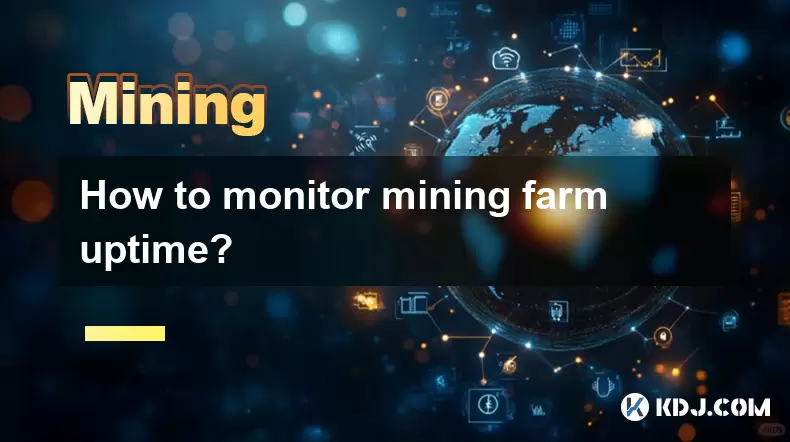-
 Bitcoin
Bitcoin $121,713.8152
3.06% -
 Ethereum
Ethereum $3,041.6437
2.42% -
 XRP
XRP $2.9499
5.12% -
 Tether USDt
Tether USDt $1.0000
-0.02% -
 BNB
BNB $704.1034
1.75% -
 Solana
Solana $166.7523
2.91% -
 USDC
USDC $0.9999
0.00% -
 Dogecoin
Dogecoin $0.2052
2.90% -
 TRON
TRON $0.3011
-0.47% -
 Cardano
Cardano $0.7461
1.42% -
 Hyperliquid
Hyperliquid $48.3650
1.12% -
 Stellar
Stellar $0.4548
3.52% -
 Sui
Sui $3.9527
14.50% -
 Chainlink
Chainlink $16.3300
5.87% -
 Bitcoin Cash
Bitcoin Cash $511.8016
1.25% -
 Hedera
Hedera $0.2395
1.40% -
 Avalanche
Avalanche $21.6526
2.06% -
 UNUS SED LEO
UNUS SED LEO $9.0073
-0.23% -
 Shiba Inu
Shiba Inu $0.0...01369
2.61% -
 Toncoin
Toncoin $3.0335
0.66% -
 Litecoin
Litecoin $96.6206
1.72% -
 Monero
Monero $355.1673
5.35% -
 Polkadot
Polkadot $4.0839
2.47% -
 Uniswap
Uniswap $9.3282
9.72% -
 Dai
Dai $0.9997
-0.01% -
 Ethena USDe
Ethena USDe $1.0004
-0.04% -
 Pepe
Pepe $0.0...01248
1.07% -
 Bitget Token
Bitget Token $4.4642
2.68% -
 Aave
Aave $325.0626
6.81% -
 Bittensor
Bittensor $418.1482
6.22%
How to monitor mining farm uptime?
Mining farm uptime is crucial for maximizing cryptocurrency mining profitability, as downtime directly reduces revenue.
Jul 14, 2025 at 07:08 pm

Understanding Mining Farm Uptime and Its Importance
In the cryptocurrency mining ecosystem, mining farm uptime refers to the duration during which your mining hardware remains operational and connected to the mining pool or network. Ensuring high uptime is critical for maximizing profitability because any downtime translates directly into lost revenue. Miners often invest in robust monitoring tools and systems to track their rigs' performance and availability in real time.
Mining farms can consist of dozens or even hundreds of individual miners, making manual oversight impractical. Therefore, automated monitoring solutions are essential to detect outages, hardware failures, or software issues as soon as they occur. This allows operators to take corrective action quickly and maintain consistent hash rate output.
Selecting the Right Monitoring Tools
To effectively monitor mining farm uptime, you need reliable monitoring tools that provide comprehensive insights into each miner’s status. Some popular options include:
- Minerstat: A cloud-based platform that supports ASICs and GPUs, offering detailed dashboards for tracking uptime, temperature, hashrate, and connection status.
- Awesome Miner: A Windows-based solution with support for multiple mining algorithms and centralized control features.
- RaveOS: A lightweight Linux-based OS designed specifically for miners, featuring built-in monitoring capabilities accessible via a web interface.
Each tool comes with its own set of features, so it's important to choose one that aligns with your mining setup and technical proficiency. Look for platforms that offer real-time alerts, historical data analysis, and remote access to ensure complete visibility over your mining operations.
Setting Up Remote Access and Notifications
Once you've chosen a monitoring tool, the next step involves configuring remote access and notification systems. These features are crucial for receiving timely updates when a miner goes offline or experiences performance degradation.
To set up notifications:
- Log into your monitoring dashboard.
- Navigate to the alert settings section.
- Configure email or SMS notifications for specific events such as miner shutdown, low hashrate, or overheating.
- Optionally integrate with messaging apps like Telegram or Discord using webhooks for instant alerts.
Remote access typically involves enabling SSH (Secure Shell) on your mining rig or using the built-in remote desktop functionality provided by some operating systems like RaveOS. Ensure strong passwords and two-factor authentication are enabled to prevent unauthorized access.
Implementing Redundancy and Failover Systems
Even with top-tier monitoring tools, unexpected outages can still occur due to power failures, internet disruptions, or hardware malfunctions. Implementing redundancy measures helps minimize downtime and maintain continuous operation.
Consider the following strategies:
- Use uninterruptible power supplies (UPS) to protect against sudden power losses.
- Set up backup internet connections using mobile hotspots or secondary ISPs.
- Deploy failover scripts that automatically restart miners or switch mining pools if performance drops below a certain threshold.
These systems work together to ensure that your mining farm continues running smoothly even under adverse conditions. The goal is to reduce manual intervention while maintaining optimal uptime through automated responses.
Analyzing Data and Optimizing Performance
Monitoring uptime isn’t just about detecting failures; it's also about analyzing trends to optimize overall performance. Most monitoring platforms offer detailed analytics that allow you to view historical data regarding miner uptime, efficiency, and errors.
Key metrics to focus on include:
- Average daily uptime percentage
- Frequency and duration of outages
- Temperature and fan speed logs
- Historical hashrate fluctuations
By reviewing this data regularly, you can identify patterns that may indicate recurring issues—such as overheating during peak hours or unstable connections at specific times of day. Addressing these systematically will improve long-term reliability and profitability.
Frequently Asked Questions
Q: Can I monitor mining farm uptime without an internet connection?
A: No, most monitoring tools require an active internet connection to relay real-time data from your mining rig to the dashboard. However, local logging systems can record data temporarily during outages, which can be uploaded once connectivity is restored.
Q: How accurate are uptime reports generated by mining software?
A: Accuracy depends on the quality of the monitoring tool and how frequently it polls the mining devices. Reputable platforms like Minerstat and Awesome Miner use frequent polling intervals (every 1–5 minutes) to ensure high accuracy in uptime tracking.
Q: What should I do if my miner shows high uptime but low hashrate?
A: High uptime combined with low hashrate indicates that the miner is running but not performing efficiently. Check for issues such as outdated firmware, incorrect mining pool configuration, or thermal throttling due to overheating.
Q: Is it possible to monitor uptime for both ASIC and GPU miners simultaneously?
A: Yes, platforms like Minerstat and RaveOS support mixed environments with both ASIC and GPU miners. They provide unified dashboards where you can monitor all devices regardless of type or brand.
Disclaimer:info@kdj.com
The information provided is not trading advice. kdj.com does not assume any responsibility for any investments made based on the information provided in this article. Cryptocurrencies are highly volatile and it is highly recommended that you invest with caution after thorough research!
If you believe that the content used on this website infringes your copyright, please contact us immediately (info@kdj.com) and we will delete it promptly.
- Bitcoin's Ascent: From Crypto to Valuable Asset Dominating Global Finance
- 2025-07-14 22:30:11
- Bitcoin, Michael Saylor, and the Relentless Pursuit: A Deep Dive
- 2025-07-14 20:50:12
- BONK's Wild Ride: Grayscale Buzz and Volume Spike - What's Next?
- 2025-07-14 21:10:46
- Week Review, July 7-13, Highlights: Crypto Market Surges to New Heights
- 2025-07-14 21:10:46
- Pi Network's Price Puzzle: Stability Amid Altcoin Recovery – What's Next?
- 2025-07-14 21:17:24
- ADA Eyes $1.90, HBAR & ONDO: Bullish Breakouts on the Horizon?
- 2025-07-14 21:30:11
Related knowledge

How are crypto mining profits taxed?
Jul 14,2025 at 12:28am
Understanding Cryptocurrency Mining and TaxationCryptocurrency mining involves validating transactions on a blockchain network and earning rewards in ...

How to keep a mining rig cool
Jul 12,2025 at 01:42pm
Understanding the Importance of Cooling in Mining RigsCryptocurrency mining is an intensive process that places heavy demand on hardware components, p...

How much does it cost to start crypto mining?
Jul 13,2025 at 12:22am
Understanding the Basic Costs of Crypto MiningStarting crypto mining involves several upfront and ongoing expenses. The primary costs include hardware...

What is the most profitable crypto to mine?
Jul 13,2025 at 07:00am
Understanding Mining Profitability in CryptocurrencyWhen evaluating the most profitable crypto to mine, it's essential to consider several factors tha...

What do I need to start mining crypto?
Jul 13,2025 at 12:28am
Understanding the Basics of Crypto MiningCrypto mining is the process by which transactions are verified and added to a blockchain, and new coins are ...

How does crypto mining work?
Jul 13,2025 at 11:01am
Understanding the Basics of Crypto MiningCrypto mining is the process through which new cryptocurrency coins are introduced into circulation and trans...

How are crypto mining profits taxed?
Jul 14,2025 at 12:28am
Understanding Cryptocurrency Mining and TaxationCryptocurrency mining involves validating transactions on a blockchain network and earning rewards in ...

How to keep a mining rig cool
Jul 12,2025 at 01:42pm
Understanding the Importance of Cooling in Mining RigsCryptocurrency mining is an intensive process that places heavy demand on hardware components, p...

How much does it cost to start crypto mining?
Jul 13,2025 at 12:22am
Understanding the Basic Costs of Crypto MiningStarting crypto mining involves several upfront and ongoing expenses. The primary costs include hardware...

What is the most profitable crypto to mine?
Jul 13,2025 at 07:00am
Understanding Mining Profitability in CryptocurrencyWhen evaluating the most profitable crypto to mine, it's essential to consider several factors tha...

What do I need to start mining crypto?
Jul 13,2025 at 12:28am
Understanding the Basics of Crypto MiningCrypto mining is the process by which transactions are verified and added to a blockchain, and new coins are ...

How does crypto mining work?
Jul 13,2025 at 11:01am
Understanding the Basics of Crypto MiningCrypto mining is the process through which new cryptocurrency coins are introduced into circulation and trans...
See all articles

























































































